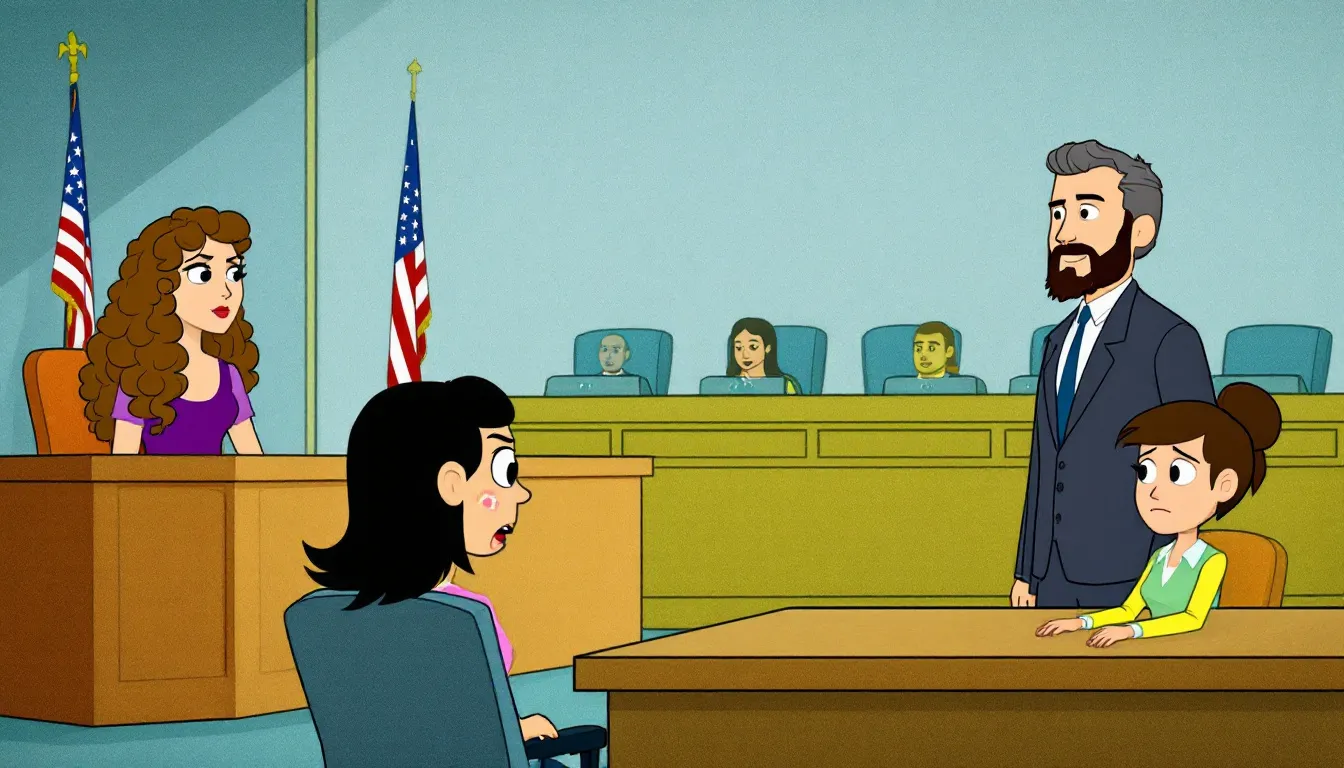The Complete Guide to Law Litigation: Legal Holds and the Process (2025)

Introduction
Organizations face a critical responsibility when litigation is anticipated or initiated: the preservation of potential evidence. This legal obligation, known as a “duty to preserve,” is enforced through a formal process called a legal hold (also referred to as a litigation hold or preservation order).
Anticipated legal proceedings refer to situations where there is a reasonable expectation that certain information could be crucial for upcoming litigation. This concept emphasizes the importance of implementing a legal hold proactively, as the duty to preserve evidence may arise prior to a formal lawsuit, triggered by various scenarios such as receiving a demand letter or recognizing potential disputes.
This comprehensive guide explains how legal holds work, when they’re triggered, and how organizations can implement a defensible process to mitigate legal risks while efficiently managing data preservation obligations.
What Is a Legal Hold?

A legal hold is a formal notification and process designed to preserve potentially relevant evidence when litigation is reasonably anticipated. It temporarily suspends normal data retention and destruction policies to ensure that evidence remains intact for potential discovery proceedings.
Legal holds apply to both physical documents and electronically stored information (ESI), requiring careful management across multiple data sources and custodians within an organization. Adhering to legal hold requirements is crucial to safeguard relevant information during litigation and prevent spoliation. These requirements outline the procedural aspects necessary for compliance and highlight the repercussions of failing to adhere to such mandates.
Understanding the Litigation Process

The litigation process is a structured series of steps designed to resolve legal disputes, starting from the initial investigation and culminating in a final judgment. Understanding this process is crucial for ensuring a defensible legal hold process and preserving relevant data effectively.
The litigation process typically begins with an investigation, where parties gather evidence and build their case. This phase is critical as it sets the foundation for the entire litigation. Following the investigation, the discovery process takes place, where parties exchange relevant information and documents. This step is essential for uncovering the facts and evidence that will support each party’s claims or defenses.
In addition to the traditional litigation route, alternative dispute resolution (ADR) methods, such as mediation and arbitration, offer ways to resolve disputes outside of court. These methods can be more cost-effective and quicker than formal litigation, providing a viable option for many legal disputes.
In federal court, the litigation process is governed by the Federal Rules of Civil Procedure, which outline the procedures for preserving and producing electronically stored information (ESI). These rules ensure that all parties take reasonable steps to preserve relevant data and prevent spoliation of evidence.
A well-planned litigation strategy is crucial to ensure that all relevant documents and data are preserved and produced in a timely manner. While the litigation process can be complex and time-consuming, a strategic approach can help parties navigate it efficiently and effectively, ensuring compliance with all legal requirements.
Related Terms; litigation hold process, litigation counsel, preserve records, one party, ongoing hold
When Is a Legal Hold Triggered?
Legal holds are implemented when a triggering event occurs that creates a reasonable anticipation of litigation. Common triggering events include:
- Receipt of a complaint or legal filing
- Formal notification of intent to sue
- Receipt of a preservation letter or demand letter
- A significant incident likely to result in litigation (product failures, accidents, etc.)
- Government investigations or regulatory inquiries
- Internal discovery of potentially illegal activity
- Obvious threats of litigation
These events can occur even before a formal lawsuit is initiated.
The determination of when the duty to preserve arises is fact-specific and should be evaluated case-by-case. Courts generally consider whether a reasonable person in the same position would anticipate litigation based on the circumstances.
The Scope of Preservation
Organizations are not required to preserve “every shred of paper, every email, or every electronic document.” Instead, the duty extends to:
- Relevant documents and information
- Data created by key custodians (individuals likely to have relevant information)
- Information that may support claims or defenses in the anticipated litigation
- Data stored across various data storage systems, including cloud services, personal devices, shared network drives, SaaS platforms, and social media repositories
The scope should be reasonably tailored to the specific matter while ensuring no potentially relevant evidence is destroyed or altered.
The Legal Hold Process
1. Identification of Triggering Event
Legal teams must promptly identify when a triggering event has occurred that creates a legal obligation to preserve evidence, which includes identifying critical steps such as recognizing the event itself. This requires coordination between departments and clear reporting channels within the organization.
2. Determining Scope and Custodians
Once the duty to preserve is established, legal teams must determine:
- What types of information need to be preserved
- Which custodians (individuals or departments) possess relevant information, including potential custodians who may have relevant electronic stored information (ESI)
- What data sources contain potentially relevant information
- How long the preservation obligation might last
3. Issuing the Legal Hold Notice
A formal legal hold notification should be sent to all identified custodians. An effective legal hold notice typically includes:
- Clear explanation of the matter and preservation obligation
- Specific description of what information must be preserved
- Instructions on how to preserve different types of data
- Contact information for questions or assistance
- Acknowledgment mechanism to confirm receipt and understanding, including an ‘acknowledge receipt’ from custodians
- Warning about the consequences of non-compliance
4. Implementing Technical Preservation Measures
Beyond notifying custodians, organizations should implement technical preservation measures and follow preservation procedures:
- Suspending automatic deletion of relevant data
- Creating backup copies of critical systems
- Working with IT to identify and preserve data in various systems
- Implementing in-place preservation where available
- Securing physical documents and evidence
5. Tracking Compliance and Following Up
The legal team must:
- Track acknowledgments from all custodians
- Follow up with non-responsive custodians
- Document preservation efforts
- Provide instructions and address preservation questions and issues
- Send periodic reminders about ongoing obligations
6. Releasing the Legal Hold
Once litigation concludes or preservation obligations end, the legal team should:
- Formally release the legal hold via written notice
- Document the release process
- Allow return to normal document retention policies
- Maintain records of the entire legal hold process
Types of Data Requiring Preservation
Physical Documents and Evidence
- Paper records and files
- Handwritten notes
- Physical evidence and samples
- Photographs and printed materials
- Log books and journals
Electronically Stored Information (ESI)
- Emails and attachments
- Word processing documents
- Spreadsheets and presentations
- Text messages and instant messages
- Social media content
- Collaboration platform data (Slack, Teams, etc.)
- Database information
- Calendar entries
- Audio and video recordings
- Mobile device data
- Cloud storage documents
- System logs and metadata
- A wide array of electronic information
Implementation Methods
Manual Holds
In a manual legal hold process, the organization aims for a simple process but must still:
- Identify and notify custodians
- Rely on custodians to preserve their own data
- Collect and secure certain types of information
- Track compliance through direct follow-up
This approach can work for smaller organizations or limited matters, but creates risk of incomplete preservation.
Automated Legal Hold Software
Modern legal departments increasingly use specialized legal hold software that:
- Automates the notification and reminder process
- Tracks custodian acknowledgments
- Documents the entire preservation workflow
- Integrates with data sources for in-place preservation
- Provides reporting and audit trails
In-Place Preservation
Rather than requiring custodians to manually preserve data, in-place preservation involves:
- Technical mechanisms that automatically preserve data in its original location
- IT-implemented holds on specific user accounts or data sources
- Preservation without disrupting normal business operations
- Integration with email systems, cloud platforms, and other data repositories
Legal Hold Best Practices
Creating a Defensible Process
A defensible legal hold process requires:
- Documented, consistent procedures as a good practice
- Prompt implementation when triggered
- Clear communication and instructions
- Tracking and documentation of all steps
- Reasonable and proportional preservation efforts
- Ability to demonstrate good faith compliance
Documentation Requirements
Organizations should maintain detailed records of:
- When and how legal holds were implemented
- Who received notifications and when
- Acknowledgment status and follow-ups
- Steps taken to preserve different data types
- Changes to retention policies during the hold
- Any challenges or issues encountered
- Release of holds when appropriate
Cross-Functional Collaboration
Effective legal holds require coordination between:
- Legal department
- IT and data management teams
- Records management
- Business unit leaders
- Individual custodians
- External counsel (when applicable)
The Role of In-House Counsel and IT Department
In-house counsel plays a pivotal role in the litigation process, particularly in ensuring that the organization complies with its legal hold obligations. They are responsible for overseeing the legal hold process, issuing legal hold notices, and ensuring that all relevant data is preserved.
The IT department is equally essential in preserving and producing electronically stored information (ESI), such as emails, word processing documents, and other electronic data. They work closely with in-house counsel to identify key custodians and preserve relevant data, including data stored in cloud services.
Collaboration between in-house counsel and the IT department is vital. Together, they must ensure that all employees understand their legal hold obligations and the importance of preserving relevant information. This includes developing a defensible legal hold process that outlines procedures for issuing legal hold notices, preserving data, and monitoring compliance.
Staying up-to-date with the latest developments in electronic discovery and litigation hold procedures is also crucial. This ensures that the organization complies with all relevant laws and regulations, minimizing the risk of spoliation of evidence.
The IT department should be involved in the litigation process from the outset to ensure that all relevant data is preserved and produced in a timely manner. By working together, in-house counsel and the IT department can ensure that the organization takes reasonable actions to preserve relevant data and prevent spoliation of evidence.
Legal Consequences of Inadequate Preservation
Spoliation of Evidence
Spoliation refers to the destruction, alteration, or failure to preserve evidence relevant to litigation. Consequences may include:
- Monetary sanctions
- Adverse inference instructions to the jury
- Preclusion of evidence or testimony
- Dismissal of claims or defenses
- Default judgment in extreme cases
- Adverse judgments, ultimately weakening a party’s legal position
Federal Rules of Civil Procedure
Under Rule 37(e) of the Federal Rules of Civil Procedure, courts may impose sanctions if electronically stored information that should have been preserved is lost because a party failed to take reasonable steps to preserve it.
For severe cases where a party acted with intent to deprive the other party of information, courts may:
- Presume the lost information was unfavorable
- Instruct the jury it may or must presume the information was unfavorable
- Dismiss the action or enter a default judgment
Using Technology to Enhance Legal Hold Management
Legal Hold Software Solutions
Modern organizations increasingly rely on specialized legal hold software that offers critical support for the eDiscovery process, including:
- Automated notification workflows
- Custodian tracking and reminders
- Integration with data sources
- Documentation and reporting
- Risk analytics and metrics
Popular solutions in 2025 include platforms from vendors like Exterro, Everlaw, Onna, and Casepoint.
Integration with Information Governance
Legal holds should be part of a broader information governance strategy that includes:
- Clear data retention policies
- Data mapping across the organization
- Classification of information types
- Routine management of obsolete data
- Crisis response protocols
Special Considerations
Cloud Data and Third-Party Services
Organizations must consider preservation obligations for data stored in cloud services, especially in the context of legal action involving litigation holds. This includes:
- Information managed by third-party vendors
- Collaboration platforms and messaging tools
- Mobile devices and remote work environments
- Temporary or ephemeral communications
International Considerations
Legal holds involving multinational organizations must navigate:
- Different legal systems and discovery requirements
- Data privacy regulations (like GDPR)
- Cross-border data transfer restrictions
- Varying retention requirements
Litigation and Dispute Resolution
Litigation is a formal process for resolving disputes through the legal system, while dispute resolution refers to various methods used to resolve disputes outside of court. Alternative dispute resolution (ADR) methods, such as mediation and arbitration, can be effective in resolving disputes without the need for litigation.
Litigation hold notices are an essential part of the litigation process. They inform key custodians of their legal hold obligations and the importance of preserving relevant data. The litigation process can be costly and time-consuming, but with the right approach, parties can resolve disputes efficiently and effectively.
Dispute resolution methods, such as negotiation and mediation, can be used to resolve disputes before they escalate into litigation. These methods can save time and resources, providing a more amicable resolution to legal disputes.
In-house counsel and the IT department should work together to develop a comprehensive litigation strategy that includes procedures for preserving and producing relevant data. The litigation process involves various stakeholders, including legal teams, IT departments, and key custodians, who must all work together to ensure that relevant data is preserved and produced in a timely manner.
By understanding the litigation process and using alternative dispute resolution methods, parties can resolve disputes in a cost-effective and efficient manner, while also ensuring compliance with all relevant laws and regulations.
Implementing a Legal Hold Program
Policy Development
Organizations should develop formal legal hold policies that address any legal matter by:
- Defining roles and responsibilities
- Establishing clear procedures and workflows
- Setting criteria for triggering preservation obligations
- Providing templates and standard language
- Including escalation procedures for non-compliance
Training and Awareness
Effective legal hold compliance requires:
- Regular training for legal and IT teams
- Basic education for all employees
- Specialized training for frequent custodians
- Communication about the importance of preservation
- Clear instructions on preservation methods
Periodic Program Assessment
Legal hold programs should be periodically reviewed to:
- Update processes based on changing technologies
- Incorporate lessons learned from past matters
- Ensure compliance with evolving legal standards
- Improve efficiency and reduce business disruption
- Maintain defensibility in light of new court decisions
Conclusion
A robust legal hold process is essential for mitigating litigation risk and ensuring compliance with preservation obligations. By implementing clear policies, leveraging appropriate technology, and maintaining thorough documentation, organizations can navigate the complexities of evidence preservation while minimizing business disruption and legal exposure.
The information in this guide provides a foundation for developing a defensible legal hold process, but organizations should consult with qualified legal counsel to ensure their specific procedures meet applicable legal requirements.
Negative consequences, relevant esi
Resources
- Federal Rules of Civil Procedure
- The Sedona Conference Guidelines on Legal Holds
- Legal hold software providers
- Records management associations
- E-discovery professional networks













